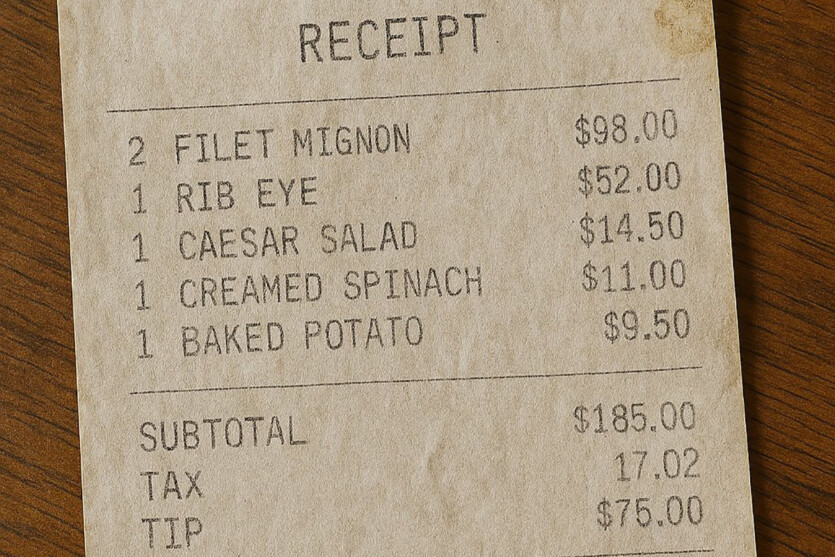Last month OpenAI has added improved image generation to GPT-4o, which allows you to create realistic images. Among other things, the generation of text on images has been significantly improved. People have already started using this feature to create fake restaurant receipts, which may become another tool in the already wide arsenal of AI deepfakes used by fraudsters.
Didi Das, an investor and active social media user, posted a photo of a fake receipt from a real steakhouse in San Francisco on X, which he claimed was created with 4o.
I think in the original image the letters are too perfect and they don’t bend with the paper. They look like hovering above the paper. Here is my attempt to make it more realistic. Let me know what you think. pic.twitter.com/EixRSHubeY
— Michael Gofman (@michaelgofman) March 29, 2025
Other users have also been able to reproduce similar results, including adding food or drink stains to make the fake look even more realistic.
The most plausible example comes from France. A LinkedIn user posted a crumpled AI-generated receipt from a local restaurant chain.

TechCrunch also tested 4o and was able to create a fake receipt for an Applebee’s in San Francisco. Although in this case, there were several obvious signs that the receipt was fake. First, the total amount uses a comma instead of a period. Second, the math doesn’t add up. AI models still have problems with basic calculations, so this was no surprise.
However, it would not be difficult for fraudsters to fix a few numbers with an image editor or more precise queries to the AI.
Obviously, the ability to easily create fake checks opens up huge opportunities for fraud. It’s not hard to imagine such technologies being used to falsely claim expenses.
OpenAI spokesperson Taya Christianson said that all images created by ChatGPT contain metadata that indicates their origin. She also added that OpenAI takes action in case of violation of the rules of use and constantly learns based on real use and user feedback.
When asked why ChatGPT allows fake receipts to be generated at all, and whether this is in line with OpenAI’s policy against fraud, Christianson replied that OpenAI’s goal is to give users as much creative freedom as possible. At the same time, fake receipts can be used not only for fraud, but also for teaching financial literacy, creating original art, and advertising products.
Source: TechCrunch
